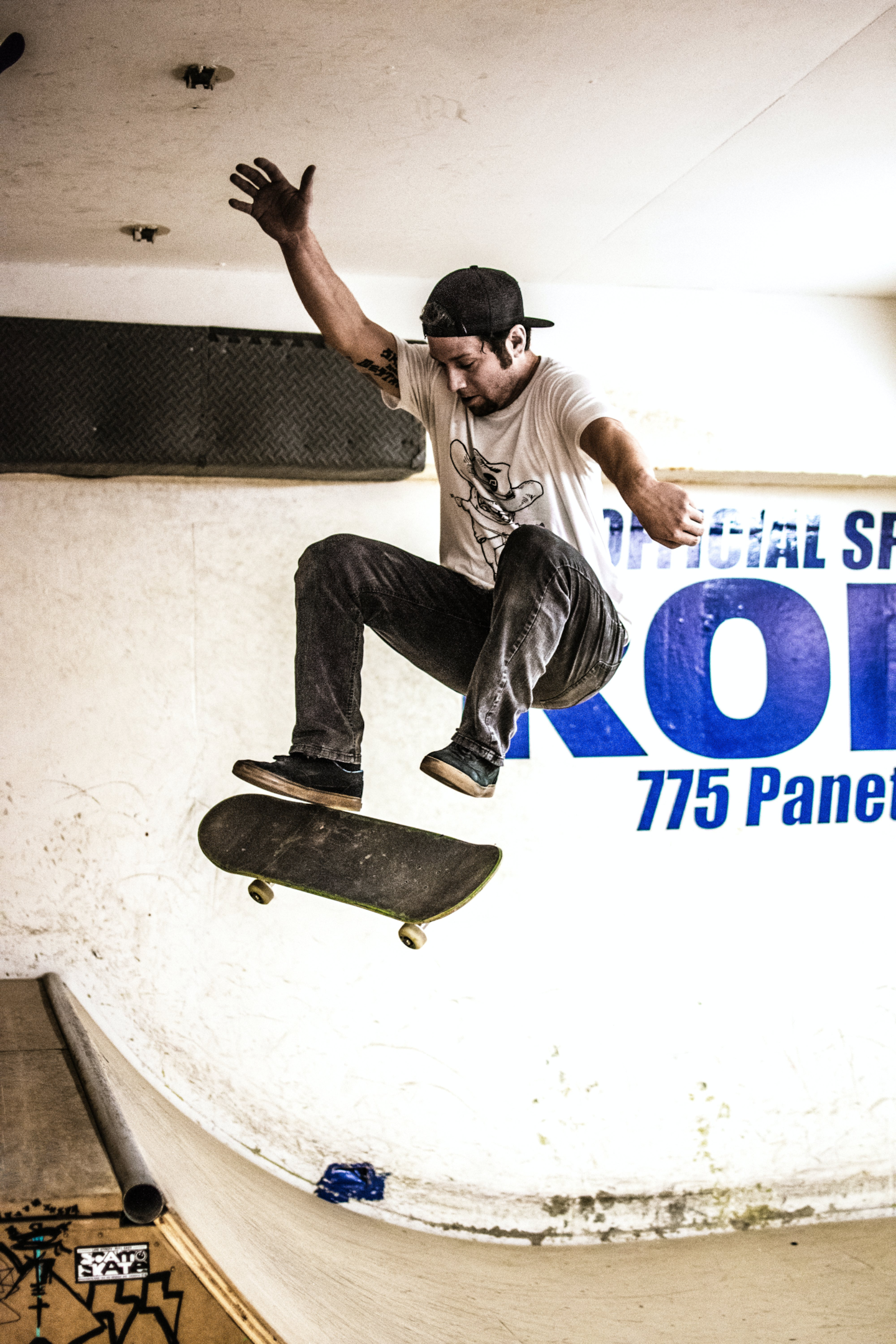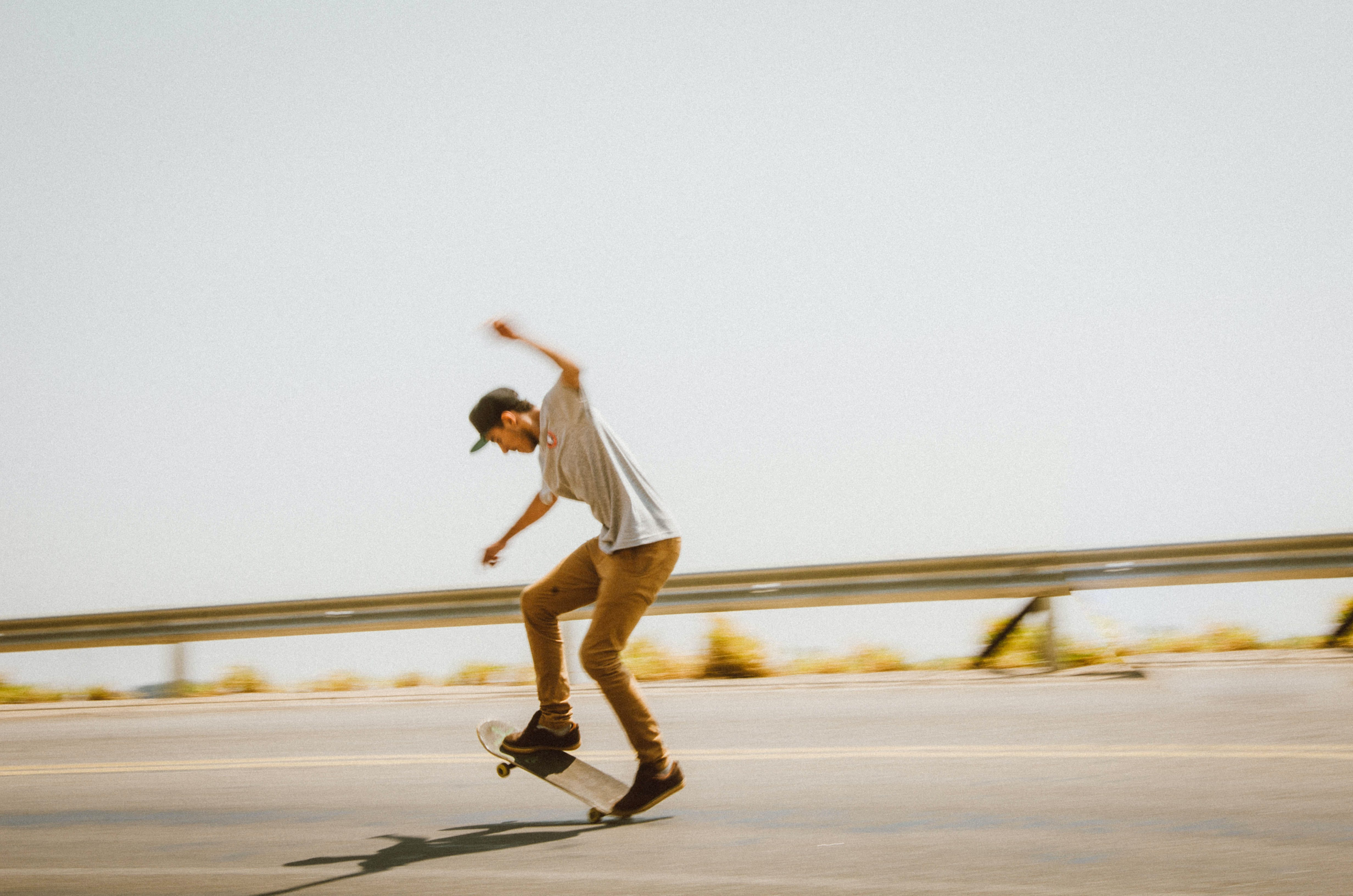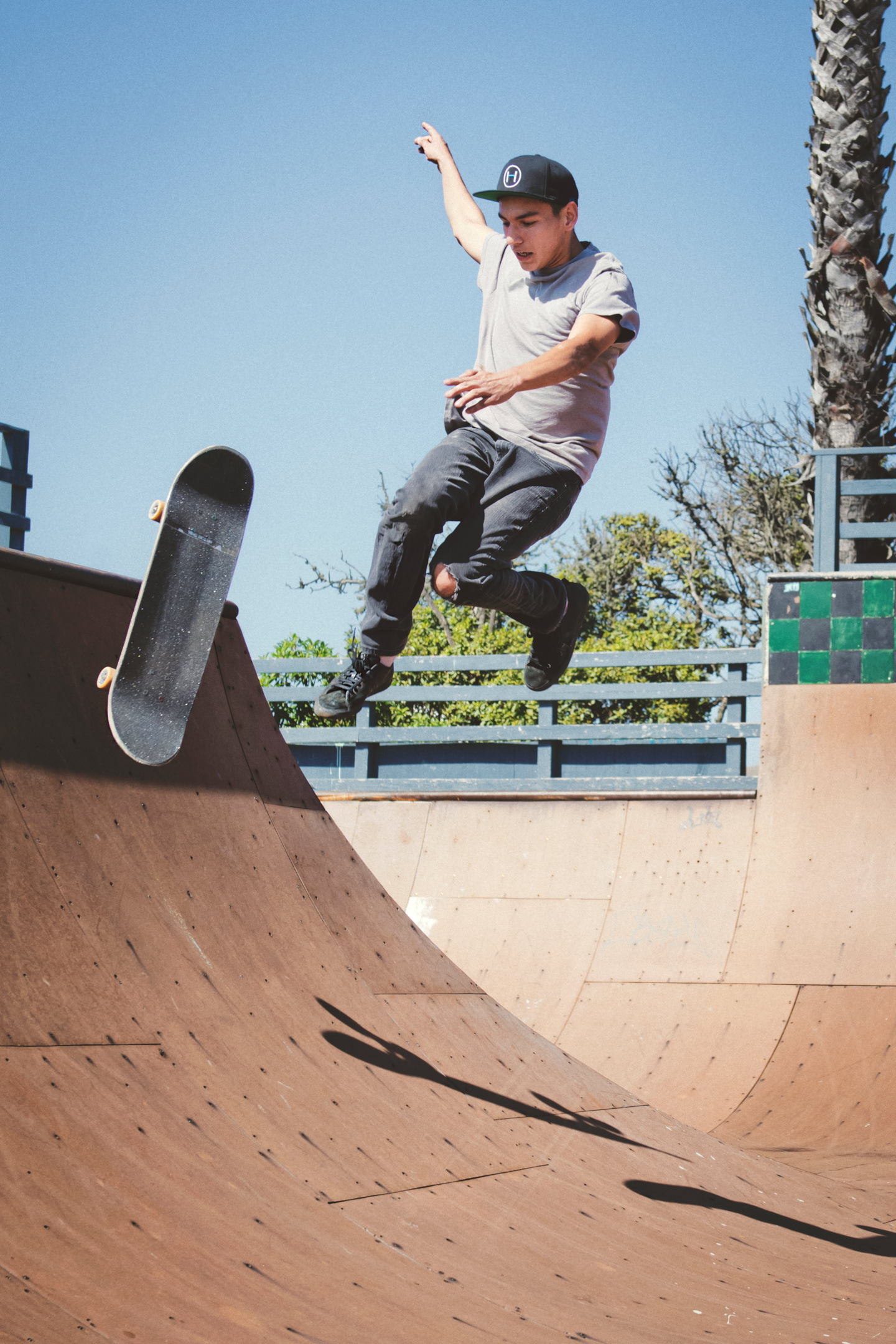Pro Skateboarding Tips for Beginners
Dec 10, 2023
Front Foot? Natural Stance? Where Do I Place My Back Foot?
Welcome to the world of skateboarding, a sport that wonderfully blends physical agility with creative expression. Skateboarding is more than just a pastime; it's a journey that welcomes participants of all ages, offering endless fun and excitement. Whether you're young at heart or a spirited beginner, this sport has something special for you. Imagine the joy of cruising on your skateboard, feeling the breeze as you smoothly glide along. It's not just about learning tricks and techniques; it's about expressing yourself, challenging your limits, and becoming part of a warm and enthusiastic community.
In this guide, you'll find 20 essential tips that are especially crafted to help beginners embark on their skateboarding adventure. These tips are your guideposts to gaining confidence and honing your skills on the board. They cover everything from selecting the right skateboard to understanding the culture that makes skateboarding such a unique and inclusive sport. Our goal is to turn your initial curiosity into a deep and lasting passion for skateboarding. We aim to make each of your skateboarding sessions enriching and joyful. So, let's begin this exciting journey together, and discover the joys and thrills that skateboarding has to offer.

Getting Started
Embarking on your skateboarding journey begins with two critical steps: selecting the right skateboard and equipping yourself with essential safety gear. These foundational choices will not only enhance your skateboarding experience but also ensure a safer and more enjoyable ride.
Choosing the Right Skateboard
The key to a great skateboarding experience lies in finding the skateboard that resonates with your personal style and meets your needs. Size and skill level are paramount considerations in this selection process. For beginners, a standard-sized board offers stability and ease of control. It's essential to understand the different components of a skateboard: the deck, trucks, and the front wheels themselves. Each plays a vital role in your ride's overall feel and performance.
-
Deck: This is the flat board where you stand. Its size and shape affect your balance and ability to perform tricks. A wider deck offers more stability, which is helpful for beginners.
-
Trucks: These are the metal T-shaped parts that attach the wheels to the deck. The tightness of the trucks affects how easily you can turn.
-
Wheels: Skateboard wheels vary in size and hardness. Softer wheels are better for street skating as they absorb more shock, while harder wheels are ideal for smooth surfaces like skate parks.
Understanding these components will help you make an informed decision when purchasing your first skateboard, ensuring it suits your size, weight, and the type of skateboarding you wish to pursue.
Essential Safety Gear
Safety should always be a top priority when skateboarding. Protective gear is not just an accessory; it's a necessity that safeguards you against potential injuries, allowing you to start skateboarding with confidence.
-
Helmet: A well-fitted helmet is non-negotiable. It protects your head from serious injuries and should always be worn, regardless of your skill level.
-
Knee Pads and Elbow Pads: These protect your knees and elbows from scrapes and bruises during falls. They are particularly important for beginners who are more prone to falling.
-
Thick Socks: A simple yet effective protective layer. Thick socks can cushion your ankles against the knocks and impacts that come with skateboarding.
-
Skate Shoes: The right pair of skate shoes can significantly enhance your skateboarding experience. They offer better grip on the board, provide more control, and reduce the risk of foot injuries.
Equipping fellow skaters and yourself with the right skateboard and safety gear sets the stage for a fulfilling and safe skateboarding journey. These initial steps are crucial in building a strong foundation for your skateboarding adventures.

Fundamental Skateboarding Skills
Developing core skateboarding skills is essential for any beginner. This section focuses on the basics of skateboarding, such as balancing, turning, and stopping, as well as mastering the art of the ollie, a fundamental trick in the sport.
Mastering the Basics: Where Does My Right Foot and Left Foot Go?
The foundation of skateboarding lies in mastering basic skills. This includes understanding how to balance on your board, execute smooth turns, and come to a controlled stop. These skills are crucial for safe and enjoyable skateboarding.
-
Balancing: Start by standing on your skateboard on a flat, smooth surface. Practice shifting your weight from one foot to the other and get a feel for the board. Balancing is key to all skateboarding maneuvers, so take your time with this step.
-
Turning: Once you're comfortable balancing, try gently leaning to the left and right to initiate turns. Your trucks (the T-shaped metal parts under the deck) will respond to your weight shifts, allowing you to steer.
-
Stopping: Learning to stop safely is vital. One common method is the foot brake, where you gently place one foot on the ground to slow down. Practice this at low speeds initially.
-
Comfortable Riding: Spend time just riding your skateboard in a comfortable environment. The more time you spend on your board, the more natural it will feel. This is also the perfect opportunity to practice falling safely. Learning how to fall correctly can greatly reduce the risk of injury. Practice rolling out of falls in a safe environment like grass or a soft mat.
The Art of the Ollie: Start on Flat Ground
The ollie is a fundamental skateboarding trick that forms the basis for many other advanced tricks. It involves jumping with your board sticking to your feet.
-
Stationary Practice: Start by practicing the ollie while your skateboard is stationary. You can do this on a patch of grass or carpet to prevent the board from moving. This helps you focus on the technique without worrying about balance or movement.
-
Key Movements: An ollie involves snapping the tail of the board down with your back foot and sliding your front foot up towards the nose of the board. This motion lifts the board and yourself into the air.
-
Progressing to Moving Ollies: Once you're comfortable doing ollies stationary, try them while moving at a slow pace. Remember, the key to a good ollie is practice and patience.

Advancing Your Skills
As you grow more comfortable with the basics of skateboarding, it's time to elevate your skills. This involves exploring new stances and setting realistic, achievable goals depending on your settings. Both are crucial for your development and enjoyment in skateboarding.
Exploring New Stances
One of the beauties of skateboarding is the variety of stances and styles you can adopt. Each stance offers a different experience and challenges, broadening your skateboarding skills.
-
Nollie: Short for 'nose ollie,' the nollie is an ollie executed by popping the nose of the skateboard, as opposed to the tail. It's a great way to add variety to your tricks.
-
Switch: Skateboarding 'switch' means riding with your opposite stance. If you're naturally regular-footed (left foot forward), switch would be riding goofy-footed (right foot forward), and vice versa. It's like writing with your non-dominant hand, challenging but rewarding.
-
Fakie: Fakie stance is riding your skateboard backward, with your tail in front. It's different from switch because your footing doesn't change, just the direction of the board. This stance opens up a new array of tricks and maneuvers.
Learning these new stances not only improves your versatility and skill but also keeps skateboarding exciting and fresh. Each stance requires patience and practice, so don't be discouraged if it feels awkward at first. It's all part of the learning process.
Setting Realistic Goals
Goal setting is a powerful tool in skateboarding, as it is in any skill development. Goals give you direction, motivate you, and provide a sense of achievement as you progress.
-
Short-Term Goals: These could be as simple as mastering a new trick, improving your balance, or feeling more comfortable in a new stance. They should be achievable within a few weeks or months.
-
Long-Term Goals: These are broader and more ambitious, like participating in a local skateboarding event, mastering a series of complex tricks, or even becoming proficient in all stances.
-
Measurable and Specific: Make your goals as specific as possible. Instead of setting a goal to 'get better at skateboarding,' set a goal to 'land an ollie 10 times in a row without falling.'
-
Stay Flexible: It’s important to be flexible with your goals. If you find a goal too challenging, it's okay to adjust it. Skateboarding is about enjoyment and personal growth, not just ticking off achievements.

Skateboarding Mindset and Community
Building a Skater's Mindset
Developing a healthy skateboarding mindset is key to your growth and enjoyment. This mindset involves focusing on your personal progress and avoiding negative comparisons with others.
-
Focus on Personal Growth: Skateboarding is a personal journey. Concentrate on your own improvements and milestones. Remember, every skater has a unique pace and style of learning.
-
Avoid Negative Comparisons: It's natural to look at other skaters and feel like you're not measuring up. However, skateboarding is not a competition with others, but a challenge with yourself. Admire others' skills, but use them as inspiration, not as a yardstick for your self-worth.
-
Embrace Challenges: See every fall and failed attempt as a step towards improvement. Skateboarding is as much about resilience and perseverance as it is about skill.
-
Celebrate Small Victories: Acknowledge and celebrate your progress, no matter how small. Landed a new trick? Rode a bit longer without falling? These are all significant achievements on your skateboarding journey.
Engaging with the Skateboarding Community
The skateboarding community is known for its inclusivity and support. Engaging with fellow skateboarders can enrich your experience, offering both learning opportunities and a sense of belonging.
-
Seek Advice and Tips: More experienced skaters usually have a wealth of knowledge and are often happy to share tips and advice. Don't hesitate to ask for help or feedback on your technique.
-
Share Your Experiences: Sharing your challenges and successes can be incredibly rewarding. It not only helps others learn from your experience but also helps build connections within the community.
-
Participate in Local Skate Events: Attending local skate events, whether as a participant or a spectator, is a great way to immerse yourself in the culture, meet new people, and get inspired.
-
Respect and Encouragement: Always show respect to other skaters and encourage those around you. A supportive environment fosters learning and enjoyment for everyone.
Bringing It Together
Remember that every ride, every fall, and every triumph is a step forward in this exciting adventure. Skateboarding is more than just a sport; it's a journey of self-discovery, creativity, and community. For beginners, the road might seem challenging at first, but the rewards are immense and deeply fulfilling.
Embrace the learning process with patience and enthusiasm. The early stages of skateboarding are all about exploring your limits, understanding your board, and connecting with the rhythm of the ride. There will be falls and there will be frustrations, but these are the moments that shape you as a skateboarder. They teach resilience, adaptability, and determination. With each practice session, you're not just improving your skills; you're also building character and confidence.
FAQ Section
Q1: What is the best skateboard for a beginner? A1: A complete skateboard suitable for your height and weight is ideal. Visit a local skate shop for personalized advice.
Q2: How do I improve my skateboarding skills? A2: Practice regularly, focus on mastering basic skills before advancing, and don't be afraid to ask for tips from experienced skaters.
Q3: Is skateboarding safe for beginners? A3: Yes, with the right protective gear and a focus on learning to fall safely, skateboarding can be a safe and enjoyable sport for beginners.




































